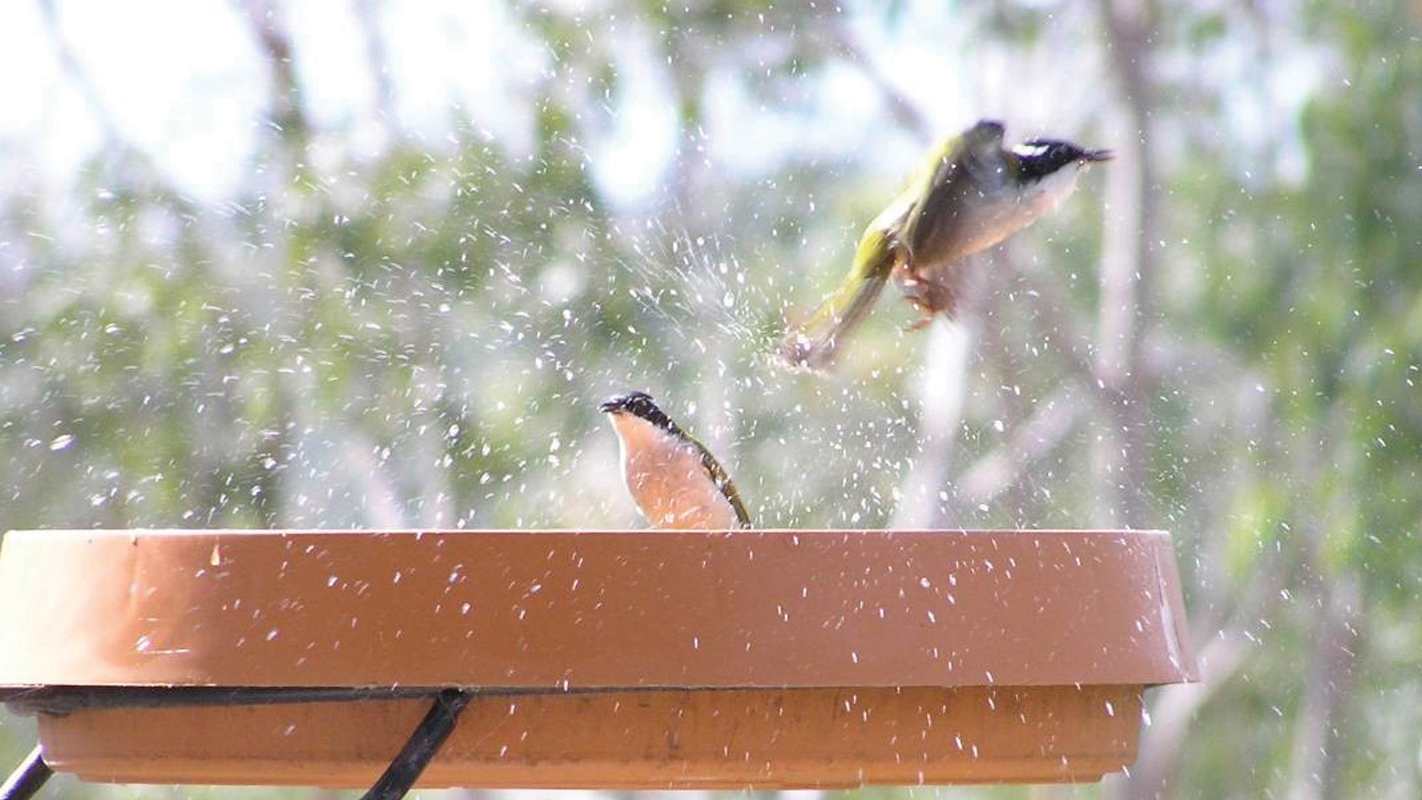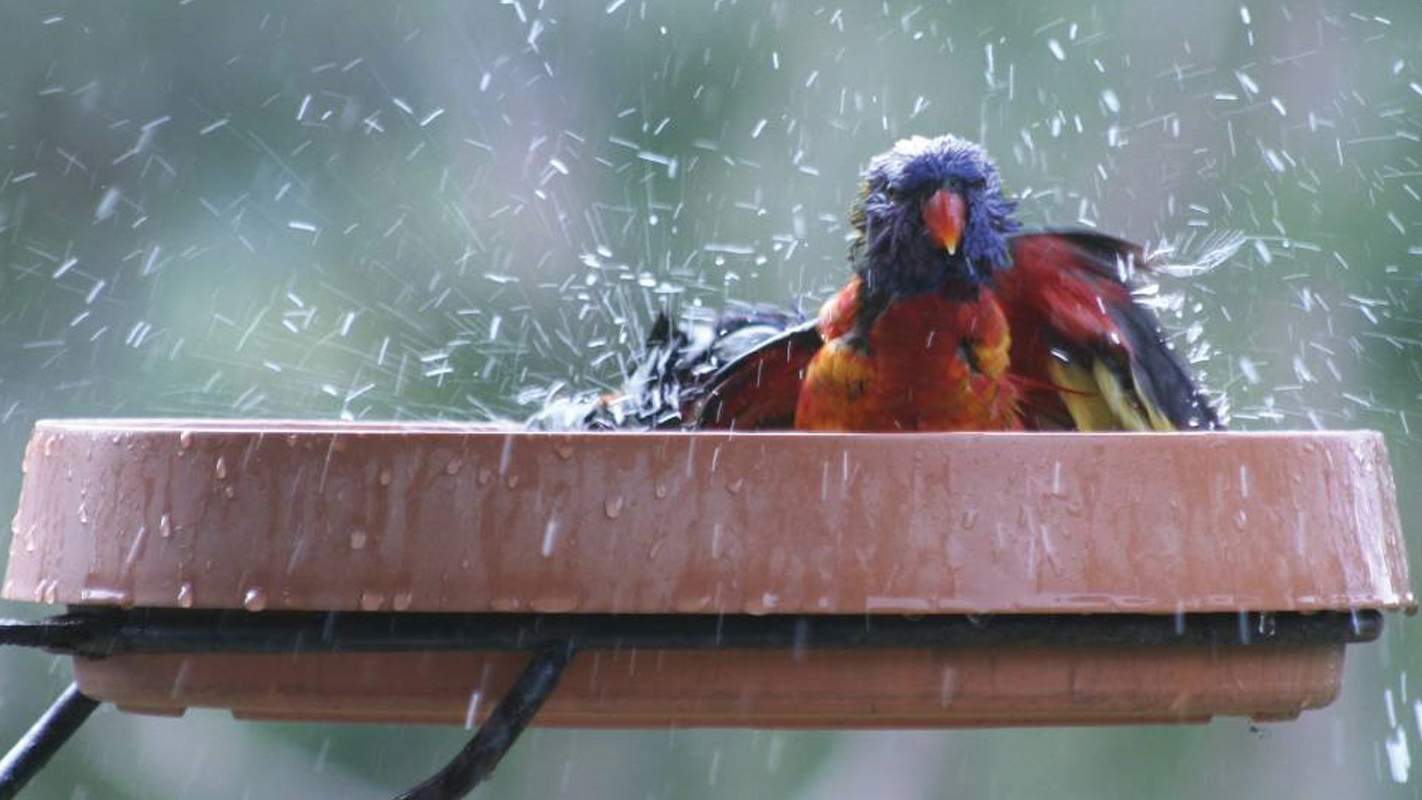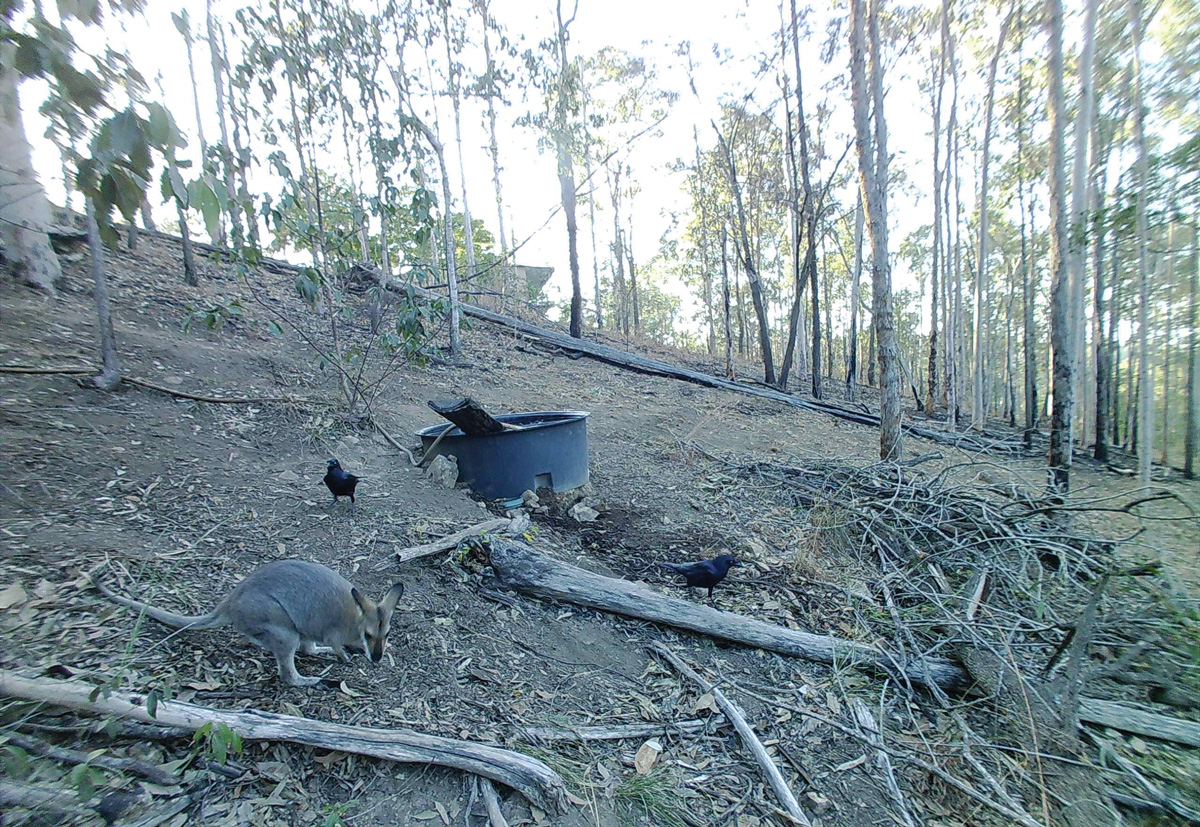There is much debate on the positives and negatives of feeding backyard wildlife. The truth is, many of us Land for Wildlifers do feed our wild neighbours.
The simple provision of a water source can attract and assist a surprising variety of wildlife without causing problems associated with feeding such as malnutrition and aggression.
Not long after moving to our ten acre Land for Wildlife property at Kholo west of Brisbane, we purchased a basic netball hoop fitted with a ‘replicotta’ (plastic coloured to replicate terracotta) plant saucer and installed it on our veranda as a bird bath. With surprising speed some common birds began using it almost straight away. Before long, many smaller and shyer species also became regular visitors.
We have noticed the smaller birds are comfortable in using this water source because of its height (6m off the ground) and the cover of nearby vegetation which provides a place of speedy retreat when danger is sensed (not to mention nesting material and food too!).
This set up was cheap (under $50) and simple to install. Most importantly, it is easy to remove the saucer and take it inside for a good scrub which must be done regularly. It provides us with many hours of entertainment and much joy to watch the birds drinking and bathing.
15 years later, we have added a second water source made from the same materials only a few metres away. Both are more popular than ever. We have observed that having two ‘baths’ allows different birds to access without getting too close to other species that may take exception to their presence in close quarters.
With the recent dry period, we have also added a large, plastic trough for wallabies to drink from. Images captured with our fauna camera have shown this water point to be just as popular, being visited by Lace Monitors, bandicoots, possums, phascogales and several species of birds. We have also added some smaller water bowls on the ground for small reptiles, frogs, bees, etc. One Lace Monitor hopped in and was photographed leaving a whole hour later!
If you haven’t already considered providing water for your non-human neighbours, I urge you to give it a go. Not only are you giving them a guilt-free helping hand, but you also have the opportunity for hours of entertainment watching their antics. We often get the privilege of observing birds bathing and frivolously splashing about.
Some considerations when putting water out for wildlife:
- Non-porous containers are more hygienic and easier to clean.
- Scrub and refill containers regularly so that any diseases or parasites are not being spread between individuals via the water.
- Provide a variety of water sources in different parts of the environment that are suitable for different species (consider animals of all sizes and shapes).
- Keep the water points safe by providing sticks or vegetation for animals to climb out so they cannot drown.
- Endeavour to prevent Cane Toads, mosquitoes and other pests from breeding. Toads can be kept out by having containers with smooth walls at least 50cm off the ground.
Species we have photographed at our bird bath include: Sulphur-crested Cockatoo, Australian King Parrot, Rainbow Lorikeet, Scaly-breasted Lorikeet, Noisy Friarbird, Little Friarbird, Scarlet Honeyeater, White-throated Honeyeater, Yellow-faced Honeyeater, Fuscous Honeyeater, Noisy Miner, Silvereye, Pied Currawong, Grey Fantail, Willie Wagtail, Spangled Drongo, Grey Shrike-thrush, Olive-backed Oriole and Australian Magpie.
There are many more species of birds that frequent this area and we suspect some of them use the water bath; we just haven’t caught them in the act yet!
Article and photos by Renee Chamberlin
Land for Wildlife member Kholo, Brisbane



